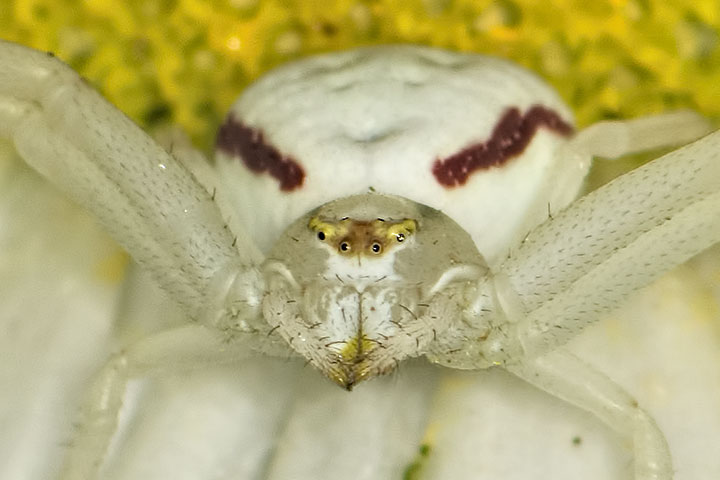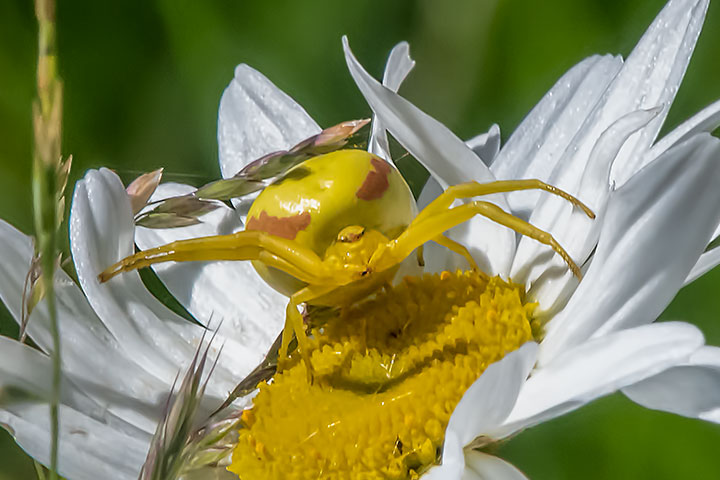As far as I can tell, the daisy is the favourite local hunting ground of crab spiders (Misumena vatia), so when the daisies bloom, I scan them for spiders.
The crab spider is a chameleon: it can change colour so as to match its background, and so be unnoticed by the pollinators it would capture and eat. It has two colours: white is its base colour, but by secreting a yellow pigment into the outer cellular layer of the body, it can turn yellow.
A white and yellow flower, such as a daisy, is thus ideal. When it hunts from the petals, it is white; when it hunts from the floral disc (centre), it is yellow. Yet, I have almost always seen it white and hunting from the petals — only rarely is it yellow and hunting from the disc. The spider has a distinct bias toward white.

A white crab spider hunts from the petals of a daisy (2013).
Is this because there is a greater area of petals, or perhaps because it hunts from the sidelines when pollinators head for the floral disc? Possibly both, but there is another possibility: it is not easy to turn yellow. It takes the spider about 6 days to change from yellow to white, but from 10 to 25 days to turn from white to yellow. Producing and infusing its skin with the yellow pigment seems to be hard work. Maybe the crab spider would just rather not put in the effort.
Now, if you start searching daisies for crab spiders, you will probably find that you have to check a few hundred before spotting one — and that spider will be white. I don’t know what the incidence of yellow crab spiders on daisies is, but it is perhaps only one in a few thousand. However, once you find a crab spider on a flower, you can return day after day, and it will still be there.
In a somewhat uncommon sight, a rather fat and yellow, female, crab spider hunts from a daisy. She clearly has been gorging on pollinators. Given her stance, she looks almost as if she is prepared to defend her daisy from the photographer.


Wow! That’s amazing.
I will be watching my daisy patch now!
Such a fascinating world we inhabit with colour-changing spiders too!
I found a crab spider this spring on a flower of my Meyer lemon. It was white and the stance was similar. I am in the habit of enjoying the beautiful scent of the lemon flower up close. We might both have gotten more than we bargained for if I hadn’t seen it before sniffing!
I’ve found a white one in our lavender. It had captured and killed a European Skipper. It really stood out in the lavender, so I’m not sure how it concealed itself.